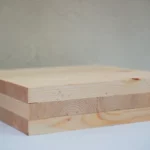Some projects just don’t go the way they’re supposed to. A board gets cut too short, a screw won’t line up, or sanding takes way longer than it should. It happens. But it’s not always the person’s fault-sometimes it’s the tools being used. That’s why smoother DIY projects usually come down to having the right setup from the start.

It’s not about owning a ton of tools. It’s about choosing the ones that help finish the job faster, cleaner, and with fewer problems. Even small upgrades in the tool kit can make a big difference, especially when doing projects around the house.
One Tool That Handles a Lot
There’s one tool that’s surprisingly useful but doesn’t get talked about as much as drills or saws. That’s the oscillating tool. It might not look like much at first, but it’s one of those tools that ends up being used on all kinds of projects once it’s in the toolbox.
An oscillating tool can cut, sand, grind, scrape, and more-depending on the attachment. It works by moving the blade or pad in quick, tiny motions that are great for tight spaces or detailed work. It’s especially good for jobs where a regular saw or sander won’t fit.
It can trim door frames, sand corners, cut out drywall sections, and remove old caulk or glue. It’s not the only tool for every task, but it handles a bunch of small or awkward ones that other tools struggle with. That’s what makes it such a time-saver.
Make a Plan Before Starting
Jumping into a project without thinking through the steps is one of the easiest ways to make mistakes. Things go smoother when there’s a clear plan. That means knowing what materials are needed, what tools will be used, and how long it might take.
Before starting anything, it helps to measure twice and mark things clearly. That way, there’s less chance of needing to redo cuts or adjust pieces later. It also avoids extra trips to the store halfway through the job.
Even a quick checklist makes things easier: What needs to be cut? What needs sanding? Is anything being glued or nailed? Laying it out ahead of time means fewer surprises later.
Use the Right Tool for the Job
Trying to force the wrong tool to do something is where most problems start. For example, using a big saw to make a tiny cut can cause splinters or uneven edges. Or using sandpaper by hand on a large area might take an hour when a power sander could finish it in five minutes.
That’s where tools like the oscillating tool come in. It can do detail work that would be hard by hand, but also handle bigger tasks in tight spots. Instead of switching between five different tools, sometimes just changing the blade or pad is all it takes.
Other helpful tools to keep nearby include a cordless drill, level, utility knife, and clamps. None of them are complicated, but they help things come out straighter, smoother, and more solid.
Keep Things Clean as You Go
Working in a messy space slows everything down. Tools get buried, wood dust gets in the way, and small parts disappear. Taking a few seconds to clean up between steps helps avoid problems and keeps the job on track.
A small vacuum or brush is great for cleaning up after sanding or cutting. Keeping tools in one spot instead of spreading them around also helps avoid confusion. When the space stays organized, it’s easier to focus on doing the work instead of finding the next tool.
Take Time on the Small Steps
Sometimes the small steps are the most important. Making sure a board is level before screwing it in, sanding rough edges before painting, or letting glue dry properly can make the final result way better.
These steps don’t always take long, but they’re easy to skip when trying to finish quickly. That’s usually when things go wrong. A wobbly shelf, peeling finish, or uneven cut can all come from rushing one part of the job.
Going steady-not fast-is the way to keep projects smooth. It might seem slower at first, but it usually saves time overall by avoiding mistakes and rework.
Practice Makes Projects Easier
No one gets everything perfect on the first try. That’s why it helps to test things out on scrap wood or extra material. Whether it’s making a cut, trying a paint stroke, or using a new blade on the oscillating tool, getting a feel for how it works first is always smart.
Practicing for just a few minutes can prevent bigger mistakes later. It also builds confidence, which makes the whole job feel easier. After a while, small projects don’t seem tricky anymore-they’re just another thing to cross off the list.
Smoother Projects Are All About the Setup
The secret to smoother DIY work isn’t being a pro-it’s about being prepared. Having a plan, using the right tools, and taking care of details early on all make the process faster and cleaner.
A tool like an oscillating tool adds a lot of flexibility. Instead of grabbing five different things, switching out one blade or sanding pad can handle most of the tricky parts. When there’s less hassle, the job feels less stressful.
Whether it’s a shelf, a patch job, or fixing something small, doing it right from the start makes it easier to finish strong. A smooth project is one that gets done without chaos-and that’s the goal.
“DIY isn’t about doing it all-it’s about doing it smart. The right tips and tools turn frustration into flawless!”







